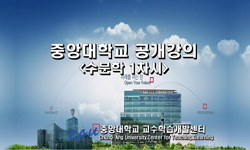하천은 18세기 전반에 활약한 조각승으로 현재까지 발견된 예로는 1703년 색난의 보조화승으로 불상조성활동을 시작하여 1726년 고흥 금탑사 북대암(현 서울 지장암 대웅전 관음보살상)과 문...
http://chineseinput.net/에서 pinyin(병음)방식으로 중국어를 변환할 수 있습니다.
변환된 중국어를 복사하여 사용하시면 됩니다.
- 中文 을 입력하시려면 zhongwen을 입력하시고 space를누르시면됩니다.
- 北京 을 입력하시려면 beijing을 입력하시고 space를 누르시면 됩니다.
https://www.riss.kr/link?id=A60040527
- 저자
- 발행기관
- 학술지명
- 권호사항
-
발행연도
2010
-
작성언어
Korean
-
주제어
조각승 ; Monk Sculptor ; 하천 ; Hacheon ; 색난 ; Saeknan ; 관음보살상 ; Avalokitesvara Buddhist Statue ; 금탑사 ; Geumtap-sa Temple ; 삼세불상 ; Three World Buddhas Statue ; 동화사 ; Donghwa-sa ; Temple
-
KDC
609.005
-
등재정보
KCI등재
-
자료형태
학술저널
- 발행기관 URL
-
수록면
207-230(24쪽)
- 제공처
- 소장기관
-
0
상세조회 -
0
다운로드
부가정보
국문 초록 (Abstract)
하천은 18세기 전반에 활약한 조각승으로 현재까지 발견된 예로는 1703년 색난의 보조화승으로 불상조성활동을 시작하여 1726년 고흥 금탑사 북대암(현 서울 지장암 대웅전 관음보살상)과 문수암 관음보살상(현 송광암 극락전 좌 보살좌상), 1727년 대구 동화사 대웅전 삼세불좌상, 1730년 창녕 관룡사 삼존불좌상(현 창녕 포교원 석가불좌상)을 수화승으로 조성하였다. 그러므로 그는 전라도에서 활동하면서 경상도 지역까지 활동 영역을 넓혀 조상활동을 활발히 하였다고 생각된다. 또한 그는 현재까지 밝혀진 문헌기록으로는 화엄사 각황전 칠존불상(1703년), 하동 쌍계사 보현동자상(1705년), 능가사 대웅전 석가불좌상(1707년), 고흥 금탑사 대세지 보살좌상(1709년)을 색난의 보조화승으로 제작하였다. 색난은 잘 알려져 있다시피 17세기 후반-18세기 초 가장 많은 기년명 불상을 남기고 있으며 색난 일파는 전라도를 중심으로 경상도 지역까지 화단을 형성하고 있는 가장 영향력 있는 조각승으로 추정된다. 불상 양식에서도 건장하고 당당하게 보이는 신체뿐만 아니라 착의법, 옷주름 등에서 색난작 1693년 구례 천은사 응진전 석가불좌상, 1694년 화순 쌍봉사 석가불좌상, 1701년 해남 대흥사 응진전 석가불좌상과 거의 유사하게 표현되어 색난 불상의 양식을 계승하고 있는 것을 알 수 있다. 또한 색난파 조각승들 중 색난의 불상 양식을 가장 잘 따르고 있어 색난 유파를 단적으로 보여주고 있다. 그러나 하천이 조성한 불상은 두부를 크게 조성하여 장대함을 보여주고 있으며 어깨도 넓고 건장하게 표현하고 있다. 이러한 표현은 색난의 작품과 유사하지만 하천이 두부를 더 크게 조성하였으며, 도식화된 주름선과 밋밋한 단판 연화형 승각기 상단 주름 등 세부 표현에서 색난과 약간의 차이가 있다. 또한 하천과 함께 불상 조성활동을 한 화승들과의 관계를 살펴본 결과 하천과 함께 두 작품 이상 불상 조성 활동을 한 종혜와 득열을 제외하고는 한 두 작품에 한정되어 나타나고 있어서 사자상승하는 도제식의 조각승 집단이지만 불사가 있을 때마다 몇 촌간의 가까운 유파의 보조각승을 모아 작업을 하였을 것으로 판단된다. 또한 하천과 함께 1730년 금탑사 극락보전 아미타삼존을 개금 하였던 덕희와 1727년 대구 동화사 삼세불상을 조성한 석준은 색난파 조각승으로 하천과는 선배 또는 동료로 추정되는데 이들은 보조 조각승이라기 보다는 불상 제작을 함께 주도하였을 것으로 생각된다.
다국어 초록 (Multilingual Abstract)
Hacheon is a monk sculptor who worked in the early 18th century. According to findings so far, he starred his career of Buddhist statue creation as an assistant of Saeknan in 1703, and participated as the leading sculptor in the erection of Bukdae-am ...
Hacheon is a monk sculptor who worked in the early 18th century. According to findings so far, he starred his career of Buddhist statue creation as an assistant of Saeknan in 1703, and participated as the leading sculptor in the erection of Bukdae-am at the Geumtap-sa Temple in Goheung (the current Avalokitesvara Buddhist Statue in Daewoongjeon at Jijang-am in Seoul), the Avalokitesvara Buddhist Statue at Munsu-am (the current Seated Bodhisattva Statue on the left side in Geukrakjeon at Songgwang-am) in 1726, the Seated Three World Buddhas Statue in Daewoongjeon at the Donghwa-sa Temple in Daegu in 1727, and the Seated Trikaya Statue at the Gwanryong-sa Temple in Changnyeong (the current Seated Shakyamuni Buddha State at Pogyowon in Changnyeong) in 1730. Therefore, he is believed to have worked mainly in Jollanam-do but expanded his activities to the Gyeongsang-do region. According to records available today, moreover, he worked as an assistant of Saeknan in creating the Seven Saints Statue in Gakhwangjeon at the Hwaeom-sa Temple (1703), the Bohyeon Dongja Statue at the Ssanggye-sa Temple in Hadong (1705), the Seated Shakyamuni Buddha Statue in Daewoongjeon at the Neungga-sa Temple in Goheung (1707), and the Seated Mahasthamaprapta Statue at the Geumtap-sa Temple in Goheung (1709). As known widely, Saeknan left the largest number of date-inscribed Buddhist statues in the late 17th century and the early 18th century, and is believed to have led the most influential group of monk sculptors that extended its influence from Jolla-do to the Gyeongsang-do region. The style of Hacheon`s Buddhist statues is also quite similar to that of Saeknan`s works in terms of sturdy and majestic physique, dress, fold, etc., and this shows that he inherited the style of Saeknan`s Buddhist statues. Furthermore, among the monk sculptors of Saeknan`s group, Hacheon followed Saeknan`s style most closely and represented the group`s style clearly. However, Buddhist statues created by Hacheon look majestic as they have a large head and their shoulders are expressed to be broad and sturdy. These characteristics are observed in Saeknan`s works as well, but Hacheon made the head larger and his works are slightly different from Saeknan`s in detailed expressions such as schematic fold lines, and smooth wrinkles on the upper side of single-plate lotus-type Samkaksika. Moreover, when we examined his relations with other monk sculptors with whom he worked together for creating Buddhist statues, only Jonghye and Deukyeol created more than two statues together with Hacheon, and other sculptors made only one or two with him. This suggests that although the monk sculptor group adopted the apprentice system that transmitted techniques through teacher-disciple relationship they might have formed a team of assistant monk sculptors from close schools whenever there was a Buddhist project. In addition, among monk sculptors working together with Hacheon, Deokhee who did gold mending for the Amitabha Triad Statue in Geukrakbojeon at the Geumtap-sa Temple in 1730, and Seokjoon who created the Three World Buddhas Statue at the Donghwa-sa Temple in Daegu in 1727 are believed to be Hacheon`s superior or colleague. They might have worked not as assistant sculptors but as co-workers who led the projects together.
동일학술지(권/호) 다른 논문
-
곤륜산, 수미산, 그리고 삼단팔각 연화대좌 -중국 삼단팔각 연화대좌에 담긴 상징-
- 한국불교미술사학회(구 한국미술사연구소)
- 임영애 ( Young Ae Lim )
- 2010
- KCI등재
-
안양(安養) 석수동(石水洞) 마애타종상(磨崖打鐘像)의 조형(造形)과 편년(編年) -범종 양식을 통해 본 마애종의 제작시기를 중심으로-
- 한국불교미술사학회(구 한국미술사연구소)
- 최응천 ( Eung Chon Choi )
- 2010
- KCI등재
-
- 한국불교미술사학회(구 한국미술사연구소)
- 최성은 ( Song Eun Choe )
- 2010
- KCI등재
-
조각승 혜희(慧熙)의 작품세계와 부산 금정사 봉안 용문사(龍門寺) 목 아미타불상의 복원적(三世佛像)연구
- 한국불교미술사학회(구 한국미술사연구소)
- 문명대 ( Myeong Dae Mun )
- 2010
- KCI등재





 KCI
KCI KISS
KISS







